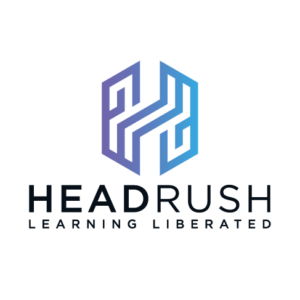Best Microlearning LMS Software For Corporate Training
Are you looking for the best microlearning LMS software? Bite-sized is the best content type for long-term retention and reinforcement. For this reason, many organizations implement micro-content for performance management. But it's not as simple as curating content and launching a JIT library.
You still need a platform to deploy and track remote training as well as gather all the info in one convenient location. And that's where microlearning LMS platforms enter the picture. In other words, they're ideally suited for modern, mobile-friendly support.
The catch is that you must find the top tools without going over budget, which usually involves hours of online research. Even then, you're still left with a pile of RFP contenders. Fortunately, our Top Microlearning LMS Solutions list takes the stress out of vendor vetting.
We've gathered all the leading LMS platforms for micro-content in one location. You'll even find product highlights and pricing overviews.
Check out eLearning Industry's top LMS list for micro-content to:
- Determine which LMS is best for your budget and use case
- Evaluate standout features for the top LMS solutions for bite-sized content
- Read user LMS reviews to gauge real-world performance
- Compare LMS tools for micro-content based on features
- Find the right LMS for your needs
In the following list, we've gathered the top Learning Management Systems for microlearning. Please keep in mind that this list is about microlearning LMS software. For all-around corporate training LMSs, you can check out our directory.
eLearning Industry's Top Microlearning LMS Software List

If your company is listed among the Top LMS Software for Microlearning, feel free to add this badge to your website.
Create And Share Complete Microlearning Courses Instantly With The Power Of AI
TalentCards is one of the most powerful microlearning platforms available, with a built-in AI course generator and native mobile app. Generate micro-courses and make training available for learners to access on smartphones, even offline.
Create your TalentCards account and start generating microlearning courses instantly. Share these courses with up to 5 learners, completely free.
Visit our directory to learn more about TalentCards.
Highlights
- Generate Microlearning Courses With AI
- Boost Engagement With Gamification
- Translate Content Into 100+ Languages
Read more
Highlights
- Generate Microlearning Courses With AI
TalentCards is a powerful microlearning platform that generates micro-content on the spot, complete with text, images, and quizzes. Just type in your topic or upload a PDF, and let the magic happen.
- Boost Engagement With Gamification
Create custom badges, challenges, and gamified quizzes. Learners compete for points on the leaderboard in the TalentCards app.
- Translate Content Into 100+ Languages
TalentCards' AI-powered translation converts training into 100+ languages in a click. Reach global audiences with consistent, high-quality on-the-job resources.
Plans And Pricing
Sign up for your free TalentCards account—no credit card needed. Choose between Standard and Premium plans when you're ready to upgrade. Scale your plan up or down based on your company's training needs without ever losing access to your content or reports.
Empower Learning In The Flow Of Work With AI-Driven Collaborative Learning
360Learning's platform uses AI and collaborative learning to deliver personalized learning that fits seamlessly into daily workflows—making upskilling fast, relevant, and impactful for your workforce.
Discover how microlearning can drive measurable upskilling results. Let them show you how.
For more info on their platform's quality, explore 360Learning reviews in our directory.
Highlights
- Collaborative Learning
- Personalized Recommendations
- Mobile Accessibility
Read more
Highlights
Foster a community of practice through expert-led course creation supported by AI, and peer-driven knowledge sharing that fuels continuous learning.
- Personalized Recommendations
Deliver AI-curated training tailored to roles and skills. Embed learning into daily workflows to boost relevance, retention, and learner engagement.
Equip deskless teams with gamified microlearning on mobile. Enable just-in-time training that's engaging, flexible, and always at hand.
Plans And Pricing
Choose from flexible plans built for scalable microlearning—whether you're training 50 or 50,000. 360Learning's pricing adapts to your needs, with expert-led content, AI tools, and a mobile app to drive continuous upskilling.
Explore Its Microlearning Capabilities To Promote The Right Learning Culture In Your Organization
Train employees, partners, and customers effectively with a NextGen LMS. Deliver an enhanced and enjoyable learning experience to your learners. Reduce skill gaps to manage a learner ecosystem that is engaged, compliant, and updated. The modern UX enables the sharing of all forms of microlearning content and is particularly nifty for learners who can access all of it on the go—on their desktops or mobile devices.
Do you want to see what this modern user-friendly LMS looks like? Request a demo!
You may also check user reviews for Adobe LMS in our directory.
Highlights
- Fluidic Player
- Content Provider Integration
- Note-Taking For Revision
Read more
Experience a world-class enterprise LMS from Adobe that is:
-
- Recognized by leading analysts and industry bodies
- Awarded for excellence across multiple categories
- Adopted by leading corporations around the world
- Used by millions of engaged learners
Make sure to watch their webinar on Re-Examining Your Organization's Training Strategy In The Wake Of A Global Pandemic.
Highlights
Take the seamless playback experience offered by Adobe Learning Manager to your enterprise systems. Embed the Fluidic Player software feature and allow learners to consume courses with a single sign-on. With the Fluidic Player software feature, learners can view and stream virtually any kind of eLearning content.
- Content Provider Integration
Give learners access to courses offered by third-party content providers such as Lynda, Harvard Mentor, and Get Abstract.** Users can enroll and take the courses from these content providers from within the LMS.
**To be purchased separately from third-party content providers.
Enhance retention by allowing learners to bookmark and create revision notes. Notes can be taken in real time and span across multiple modules. These notes act like microlearning bytes that learners can email to themselves for easy access.
Plans And Pricing
Pricing starts from $4 per learner per month.
With this licensing model in Adobe Learning Manager, you sign up for a fixed number of registered learners within your account. These are licenses assigned to individuals, who have continuous access to the system. This model is recommended for fixed learner scenarios.
- Monthly Active User Pricing
Adobe Learning Manager also offers active user pricing for organizations that have a floating audience who do not need continuous access to the system.
To discuss details on user pricing, please write to Adobe by including your requirements.
Bite-Sized Learning For Long-Term Business Impact
Trusted by global businesses for over 24 years, iSpring Solutions develops corporate tools that help companies create and deliver focused, just-in-time training that fits modern workflows.
See how iSpring Learn makes microlearning simple, scalable, and measurable. Try it free or book a live demo. Explore iSpring Learn.
Go ahead and visit our directory for recent iSpring Learn reviews.
Highlights
- Rapid Course Creation
- Smart Automation
- Mobile Learning
Read more
Highlights
Quickly create structured microlearning right in the LMS or build advanced, highly interactive courses with iSpring Suite—included with the platform.
Automate course delivery, deadlines, and reporting with rule-based workflows that keep learners on track and cut down on admin tasks for your team.
Give your team the freedom to learn when and where it works for them with a 4.8-rated mobile app, intuitive UI, and offline access.
Plans And Pricing
iSpring offers flexible pricing based on your business needs and number of active users. Plans start at $3.75/active user per month. Billed annually. You can also get a free 30-day trial or book a live, personalized demo.
Easy And Effective Content Creation For Microlearning
The Learning Pool ecosystem of ready-made eLearning catalogs, custom content production, and powerful LMS, LXP, LRS, and authoring tools gives clients the ability to quickly deliver personalized streams of expert content and curated experiences that rapidly drive performance during onboarding and beyond.
Unlock the potential of your people.
Explore Learning Pool Platform reviews.
Highlights
- Open Learning Experiences
- Open Structure
- Content Flexibility
Read more
Highlights
- Open Learning Experiences
These are an example of how Learning Pool Platform can be used to create microlearning content that suits self-directed learning.
Learning Pool Platform orders content in a way that makes it useful in a linear sequence and just-in-time learning.
Different types of content are repurposed, curated, and created to be the best format for short-form learning.
Plans And Pricing
With Learning Pool Platform, your microlearning doesn't need to be bound by any one format or authoring tool. The platform can be used to deploy eLearning, video, podcasts, PDFs, curated content, and so much more.
Close Skills Gaps With In-App Microlearning That Engages And Motivates
Absorb is a strategic learning system that delivers personalized, bite-sized training directly within your business tools to drive faster skill development, deeper engagement, and better performance at scale.
Want a library of content that drives engagement and outcomes at your fingertips? Check out Absorb Amplify and its bite-sized offerings.
For more info, make sure to explore Absorb LMS reviews in our directory.
Highlights
- Personalized Learning Journeys
- Just-In-Time Learning
- Engaging Learner Experiences
Read more
Highlights
- Personalized Learning Journeys
Support targeted training by role, interest, or growth goals and keep learners engaged with content that fits their path.
Training when and where it matters. Surface content right inside the apps learners already use for better retention and productivity.
- Engaging Learner Experiences
Boost motivation with hyper-relevant content that includes rich media like video and animations to make learning stick and promote active participation.
Plans And Pricing
Absorb LMS customizes its pricing based on your needs to help you deliver effective training programs. By factoring in the number of learners and what you want to achieve, they ensure you pay for what you need and have a scalable learning partner for growth.
Deliver, Track, And Create Bite-Sized, Impactful Microlearning Modules
ELB Learning offers a wide range of products and services designed to track and deliver microlearning, including their LMS, Rockstar Learning Platform. These solutions help organizations train employees to meet business needs.
Request a free account or sign up for a demo by visiting the Rockstar Learning Platform website.
Check out Rockstar Learning Platform reviews in our directory.
Highlights
- Microlearning Modules
- Engaging And Immersive Learning Experiences
- Peer-Based, Social Learning
Read more
Highlights
Author microlearning modules on the fly right inside your LMS/LXP with Rockstar Learning Platform.
- Engaging And Immersive Learning Experiences
Seamlessly integrate interactive games, video, and simulations from tools like the Training Arcade and CenarioVR to keep learners engaged.
- Peer-Based, Social Learning
Incorporate user-generated microlearning content through social channels, which act as a playlist of courses created by SMEs that can be shared with individuals or groups.
Plans And Pricing
Rockstar Learning Platform offers scalable pricing based on learner and admin count, which is ideal for growing corporate teams. Add-ons like premium support, games, and VR expand your training potential without complicating delivery.
Boost Team Performance With Daily Learning Challenges That Build Real Skills
Drive retention and performance with Moovs Learning Arena's immersive, bite-sized training—designed to help busy teams learn fast, apply faster, and grow stronger every day.
Ready to transform training? Discover the Moovs Learning Arena and see how daily challenges make learning stick.
Want to learn more about the tool? Explore Moovs Learning Arena reviews in our directory.
Highlights
- Challenge-Based Microlearning
- Real-Time Progress Insights
- Team-Based Learning Competitions
Read more
Highlights
- Challenge-Based Microlearning
Engage teams with daily challenges that spark participation, reinforce skills, and encourage continuous learning.
- Real-Time Progress Insights
Monitor skill growth and learning outcomes instantly—empowering managers to deliver timely, targeted support.
- Team-Based Learning Competitions
Fuel friendly competition with team challenges that boost knowledge retention, collaboration, and performance across departments and locations.
Plans And Pricing
Moovs Learning Arena offers flexible plans for teams of all sizes, with scalable pricing that makes it easy to deliver high-impact microlearning—quick to deploy, simple to manage.
Empower Your Extended Enterprise With AI-Powered Microlearning Solutions
CommLab India empowers L&D teams to train workforce faster and affordably through microlearning courses, videos, quizzes, and assets—powered by modern authoring tools, GenAI tools, and robust Instructional Design.
Invest in agility and impact! Join 90+ high-performing L&D teams closing skill gaps rapidly with bite-sized learning solutions.
Explore what other users have to say by reading EffectusLMS reviews in our directory.
Highlights
- Modern Microlearning Formats
- The AI-Powered Edge
- Micro "Learning Habits"
Read more
Highlights
- Modern Microlearning Formats
Get more value per training dollar with bite-sized assets—videos, infographics, gamified courses, playbooks, quizzes, flashcards—for spaced repetition and fight the forgetting curve.
Accelerate development with the latest AI tools such as Midjourney, Synthesia, Vyond Go. Streamline translations with AI-powered tools such as Smartcat and DeepL.
Deliver micro challenges (questions, flashcards) through your microlearning platform. Declutter your LMS with a tool that integrates multiple SCORM files into a single file.
Plans And Pricing
EffectusLMS by CommLab India is charged annually based on the number of users. Use it to host and track learning assets, push daily learning nuggets, configure learning paths, and get actionable insights from custom reports.
Find The Ideal LMS To Implement Your Microlearning Program
Save time and money. Compare top LMS software for microlearning by features, reviews, and rating!
What Were The Criteria That Determined Which Vendors Made The List?
Globally recognized LMS experts, including C. Pappas, and our Editorial team did a thorough review of each vendor's eligibility and relevant published content (articles, eBooks, webinars). Our committee ranked the best microlearning LMS software based on the following 9 criteria:
- Customer support
- Customer experience
- Software features
- Software innovation
- Customer reviews
- Economic growth potential
- Company's customer retention
- Employee turnover
- Company's social responsibility
After exploring this top list, make sure to read our tips on what you need to consider when opting for an LMS tool to develop micro-content.
Benefits Of Microlearning In Corporate Training
Microlearning has its limitations. For example, more complex topics still require VILT courses. Likewise, you can't simply break long-form training into bite-sized assets. The benefits of developing micro-content rely on effective implementation. Namely, the tools and delivery methods you employ. When done correctly, your organization can reap the following rewards:
Prevent Cognitive Overload
Microlearning LMS software simplifies knowledge transfer because it involves small bits of information. In fact, one of the top microlearning content best practices is to focus on a single objective. That way, employees can absorb the takeaways, process info, and then move on to the next activity.
Improve Performance Behaviors
This bite-sized approach allows trainees to narrow the scope. To illustrate, they can access training tools that are ideal for micro-content creation to target personal gaps or even unproductive habits. As a result, employees improve performance behaviors and boost workplace proficiency.
Retain Top Performers
Employees are more likely to stay with your organization if they have ongoing support, like micro-content solutions that are self-paced and address skill gaps immediately.
Maximize Resource Allocation
Fortunately, your organization can reuse existing assets to create new bite-sized training activities. But, you can also reduce costs by targeting common pain points. For instance, develop microlearning animated videos to enhance product knowledge instead of creating a full-fledged course.
Provide Mobile-Friendly Support
Mobile learning and microlearning are a perfect pair, as they provide on-the-spot support for remote staff. For example, employees access the microlearning LMS training software to master new tasks or refresh their memory.

In order to watch this video you need to have advertising cookies enabled.
You can adjust your cookie preferences
here.
What To Consider When Choosing The Best Microlearning LMS Tools
First and foremost, choosing the ideal corporate LMS for micro-content requires detailed Training Needs Analysis. For example, evaluate current LMS metrics, assessment scores, and business reports. Then, determine which microlearning LMS features fill in the gaps. Another option is to hire an outsourcing partner who specializes in training audits. Here are a few things to consider BEFORE you begin the micro-content LMS selection process:
L&D Talents And Experience Levels
First and foremost, your team must be able to use the top microlearning solutions to develop and deploy training instead of dealing with a month-long learning curve. So, evaluate their level of tech experience and design talents before investing in a new platform.
Existing Assets And Authoring Tools
Additionally, the microlearning LMS must mesh with existing tools, like authoring platforms and web conferencing software. Furthermore, the system should support your preferred content format to prevent compatibility issues.
Development Timeline And Budget
Calculate an accurate budget to prevent overspending and identify platforms in your price range. Also, you need a realistic timeline for content development and LMS implementation.
Essential LMS Features And Functions To Bridge Current Gaps
Which features and functions do you need to warrant the investment? Above all, microlearning LMS tools should help you bridge gaps cost-effectively. Thus, you must determine which features tie into current pain points.
Define Objectives And Goals Before Making Your Microlearning LMS Decision
Sadly, there's no shortcut for writing effective goals, objectives, and outcomes. Plus, you need to reevaluate them regularly to ensure they're still relevant. But, a little prep work now and then goes a long way. Especially if you want to improve ROI and find the right feature-rich LMS. Use these tips to clarify microlearning objectives and get the best value for money:
Ensure All Your Objectives Pass The Measurability Test
Without a doubt, measurability is the key to microlearning training success. Or ANY training initiative, for that matter. You must be able to evaluate the results and track progress based on clear performance indicators.
Gather Feedback From Employees To Identify Hidden Gaps
Collect feedback from staff to disclose hidden areas for improvement. For example, conduct surveys and focus groups to identify task sticking points. Then, develop new micro-content training objectives that center on relevant skills or core competencies.
Create Role-Specific Goals To Personalize The Process
In addition to high-level training objectives, you should develop personalized goals based on job duties. For instance, customer service employees have their own microlearning plan that centers on interpersonal skills.
Incorporate Manageable Milestones And Short-Term Goals
Microlearning content solutions are intended for quick consumption. As such, they should involve niche topics and objectives. So, break your long-term objectives into manageable milestones with companion micro-content activities.
Discover The Ideal LMS Solution For Your Microlearning Needs
Save time and money. Compare top LMS tools by features, reviews, and rating!
Which Businesses Can Benefit From Microlearning LMS Solutions?
Every organization can make the most out of microlearning for on-the-spot support, regardless of your staff size or budget. As a matter of fact, SMBs are able to stretch available resources thanks to the versatility of microlearning tools. Simply expand your JIT library to address emerging gaps and goals. That said, there are certain warning signs L&D managers should look for.
Staff Is Unable To Apply Training In Context
Employees might experience information overload or content that puts theory over practice. In either case, microlearning LMS software facilitates real-world application because staff can concentrate on one topic at a time and apply information right away.
Attention Spans Are Getting Short
Do your employees let distractions stand in the way of training success? Due to short attention spans and busy work schedules, microlearning is more popular than ever, as it gives employees quick and convenient bursts of knowledge.
Employees Make Frequent On-The-Job Mistakes
Frequent errors are usually a sign of ineffective training. For example, employees can't assimilate the info or see how it relates to their job duties. However, micro-content training solutions prevent costly mistakes and personalize the process.
Low Employee Retention Rates
If your talent pool is shrinking, microlearning strategies can help you reduce employee turnover. After all, top performers expect JIT support that's right at their fingertips.
What Are The Types Of Microlearning For Corporate Training?
One of the key advantages of microlearning is that there are so many options available. For instance, you can build interpersonal skills, tackle niche compliance topics, and assess practical know-how. As a matter of fact, bite-sized content can enrich every aspect of your training strategy thanks to positive reinforcement; especially use cases that require self-analysis, memory refreshers, and ongoing evaluation. Below are just a few of the microlearning tools to populate your brand-new LMS library.
Explainer Videos
Video-based microlearning is one of the most effective ways to improve employee engagement and simplify complex processes, while bite-sized animated videos are ideal for risky compliance tasks.
Infographics
These visual aids are ideally suited for microlearning content development because they're quick to consume. Case in point, employees need help completing a task, and the infographic maps out every step—complete with images, graphs, and bonus tips.
Bite-Sized Serious Games
Serious games take interactive videos a step further and immerse employees in the action. They must use all their skills and professional know-how to achieve the best outcomes, all while defeating formidable foes (AKA difficult customers) and advancing through levels.
Knowledge Checks
One of the most overlooked types of micro-content is self-assessment. As an example, employees check their knowledge after every module to gauge their proficiency. Remember, the best microlearning programs provide discreet opportunities for self-reflection.
What Are The Must-Have Features Of An Ideal Microlearning LMS?
First off, when choosing the best LMS for microlearning, you should narrow down the list of your must-have features. These are the core functions you need to maximize ROI and empower employees. For instance, offline support to provide stress-free remote training. Granted, you may not be able to check off every item due to cost constraints. However, there are certain microlearning LMS features that are non-negotiable.
Key Elements Of Top Microlearning LMS Software
Gamification Support
Gamifying microlearning gives employees the opportunity to earn badges and points for notable achievements. Essentially, your organization offers incentives for favorable performance behaviors. You can also incorporate leaderboards to fuel friendly competition and boost employee engagement.
Built-In Authoring
The best micro-content experiences are interactive and immersive. Even if they're designed to shorten seat time. As such, you should consider microlearning LMS software with built-in authoring tools. This reduces development costs without compromising employee engagement due to the fact that your L&D team can create and deploy content using a single system.
Interactive Video Support
Video-based learning is one of the top micro-content trends—and, for good reason. This LMS feature can rapidly enrich your JIT library. Given that employees don't just view a demo or tutorial, but step inside the experience, you can add hot spots and embedded storylines to draw them in.
Robust Reporting
No microlearning LMS solution is complete without advanced reporting features. Particularly, if you want to track employee performance and identify areas of improvement as well as develop timely training interventions. In addition, you should be able to customize reports, training delivery, and user groups.
Mobile Accessibility
Mobile learning is essential for training that focuses on micro-content. Modern employees need on-the-go LMS access instead of being tied to a PC. The system should support seamless learning experiences. For instance, staff can move from one device to another with ease.
Summing up, the microlearning LMS software that you purchase needs to break down the accessibility barriers. Keep in mind that modern employees expect training anytime-anywhere. Thus, LMS vendors must prioritize downloadable content, native apps, and other on-the-go features. On the whole, your new LMS platform for micro-content development should put employees in control. Every resource centers on personal gaps that tie into their job duties, as opposed to one-size-fits-all courses that force them to rearrange their busy schedules.
Evaluate And Compare LMS Vendors Before Starting Your New Microlearning Project
Despite the fact that microlearning LMS features are crucial, there are other factors to consider, such as vendor background, reputation, and niche expertise. For example, companies with proven experience in micro-content creation must stand behind their product. Likewise, they should rise to the CX challenge and meet your service expectations. Here are a few qualifications to look for in your new microlearning LMS software vendor:
Insider Knowledge
At the top of the microlearning checklist for vendor vetting is industry know-how. In this case, it's tech expertise. Does this LMS vendor stay on top of microlearning trends? More importantly, do they incorporate the latest technology and offer regular updates?
Targeted Use Case
The best LMS tool for micro-content should help you deliver effective training for the specific use case of your interest. For instance, you might need a robust platform for workforce development or compliance training. And all the features are built around that. In short, the vendor must understand your sector and all the training challenges involved.
Proven Track Record
There's nothing wrong with startup companies. After all, every business has been there before. That said, you should look for a solution with an established track record in micro-content design. This may be in the form of user reviews, ratings, or social proof.
Active Online Presence
Finally, your new LMS vendor for micro-content should have an active online presence. Even though reputation is important, they must also engage with consumers and value public feedback. As an example, they should be responding to social media comments and frequently updating their landing page or portfolio.
Keep in mind that many microlearning LMS software vendors offer free trials or demos. You can test-drive the platform before making your final decision. Admittedly, you only have a small window of opportunity to try the features and functions. So, enlist the help of your team to evaluate different aspects of the system. In this case, your L&D admin might focus on reporting, while your resident graphic designer concentrates on built-in authoring features.
![eBook Release: Find The Ideal LMS For Your Remote Teams]()
eBook Release
Find The Ideal LMS For Your Remote Teams
Maybe your organization is in virtual mode. Or you might be looking for a more effective development strategy for your external partners. In this eBook, you can explore the benefits a new LMS can bring to your business.
Next Steps After Checking eLearning Industry's Top List For Microlearning LMS Software
Choosing amongst the best microlearning LMS software requires due diligence if you want your training to be a success. As such, you shouldn't make hasty decisions or spring for the first LMS you stumble upon. In fact, it's usually a team effort. Gather feedback from employees, then ask for recommendations and invite them to test drive the tool. When all is said and done, Learning Management Systems should address your current AND future needs. Consider whether it's user-friendly for everyone and if it will evolve with your growing L&D demands.
Luckily, this top list featuring LMS tools for micro-content can help expedite the selection process and implement microlearning best practices. Also, why not peruse our Top Learning Management Systems directory for other training platforms. If you're looking for more insider secrets to select the right system, How To Buy The Right LMS: The Complete Guide is a must-read.
Yet another resource you can tap into, free of charge, is the rest of our Top Lists For eLearning solutions. They feature systems for virtually every use case and industry. Additionally, you can reach out to our in-house experts to find the LMS that matches your needs. It only takes a few minutes to sum up your project specs, and we'll send a personalized list of recommendations.
Last but not least, LMS vendors are more than welcome to submit a free listing to eLearning Industry.















